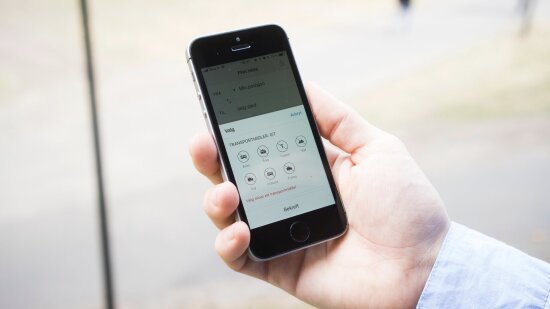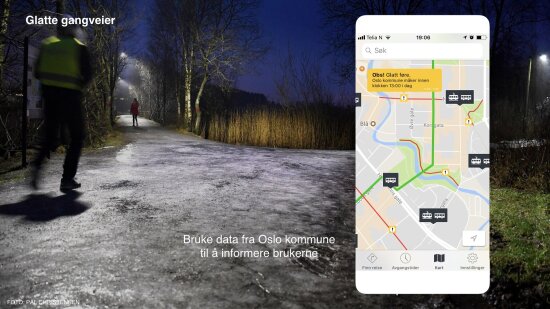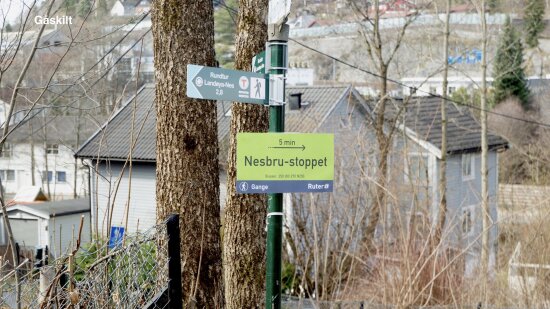Designers: Elias Olderbakk and Erlend Grimeland
Master of Arts in Design, Oslo School of Architecture and Design

Photo: Rål Christensen
The journey is the destination
Good ideas are often so simple that they make you blurt out, “Why hasn’t anyone come up with this before?”. Ruter Gange is one such idea. After all, it may seem self-evident that your legs are a means of transport no different than a tram or bus; they are simply more flexible and move at a slower speed - at least outside of rush hour.


Panel remarks
The ingenious idea behind Ruter Gange is to integrate the apostles’ horses into the already acclaimed Ruter app. Put simply, when you request the fastest way to get, for example, from the National Theatre to Birkelunden, you also get suggestions for bus and tram routes, as well as the best way to walk there. The system will be updated in real time with regard to traffic and obstacles like roadwork and will often result in the fastest method being to walk the entire or part of the distance.
It has so many win-win aspects that there is not enough space to list them all here, but they include better health, increased mobility and a more active urban lifestyle. Another effect is that the Ruter will gain better insight into how people move around the city and can convert this information into an increasingly better service for users. In addition, unlike Google, for example, Ruter does not use information on you to sell you anything.
That is why we are confident that Ruter Gange will be a valuable service for both travellers, who can enjoy better and more flexible public transport options, and for Ruter, which gains better insight into its users. It is only appropriate to take our hats off - and possibly our shoes - to the Erlend and Elias team and congratulate them on an innovative and smart concept.
Contributors
Subject teacher in Interaction Design: Einar Sneve Martinussen
Subject teacher in Service Design: Ted Matthews
Ruter: Marius Røstad and Eivind Skogen
